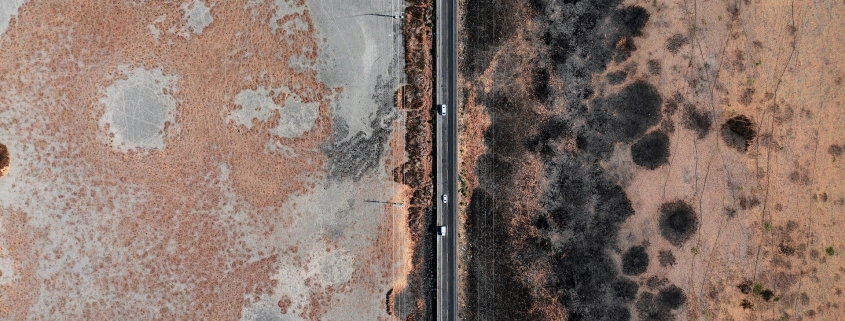When To Call a Mold Remediation Specialist?
Finding mould in your home is upsetting for anybody, but there’s no need to freak out. A significant mould invasion that goes untreated may cost tens of thousands of dollars to clear up. It may also create a negative impression of your property that will tarnish its resale value for years to come.
Are you still unsure of when you should contact a mould remediation expert and when you should attempt to remove the mould yourself? It is up for debate. Here are some simple indications of when you should contact a mould remediation expert, and why you should trust certified mold remediation, removal, inspection, testing, restoration services offered by mold remediation specialists for the process of water remediation.
Significant Water Damage
Moisture is necessary for mould to flourish. Therefore, you must move promptly to locate the cause, make the required repairs, and schedule a mould inspection if you observe water damage in your house. If mould isn’t dealt with right away, it can quickly develop and spread. 24 to 48 hours after water damage, mould can begin to form.
You need to contact a mould remediation expert if your house has water damage from a flood, leak, or another cause. Most mould removal professionals have additional training in water damage restoration and can repair your house after a leak or flooding. Ask about the services and mould removal experts offered by a nearby, trustworthy, and trusted mould remediation specialist.
Health Risks – Process of Mold Remediation
Residents of the home, particularly young children and the elderly run the danger of being ill from breathing in and smelling mould. Mould, which is probably brought on by HIV, some forms of cancer, chemotherapy, malnutrition, and organ transplants, is also harmful to persons with weakened immune systems.
If there are any delays, it is crucial to address the mould issue straight once or temporarily relocate the people who are in danger to another home. Avoid allowing the sad side consequence of mould growth in your house to be health issues.
Growth Of Mold
The pace of growth of black mould is a warning indication. Black mould is an easily contagious, blotchy, black or brownish mould. Since black mould is more likely to trigger allergies in small areas, it’s essential to take action right away if you spot even a little amount of it.
Other types of mould that are forming include pink, blue, and green mould. White mould might be trickier to see on the walls and ceilings.
Musty Odour
You may use your nose to identify musty, damp scents that are a clear sign that a problem is there even if you can’t see any evident mould. Call a mould removal firm right once if the source of the stench is an area that is likely to collect moisture according to some of the mold remediation specialists.
High Humidity
Mould may grow on your building’s surfaces without any moisture present. You may likely experience mould issues if you reside in an area with consistently humid weather for lengthy periods of the year. Mould may be proliferating in the subflooring and within the walls of your home even though you can’t see it due to the high humidity level there.
Humidity-related atmospheric moisture might also be to blame. Mould development is likely if your building tends to be damp or if your HVAC system isn’t working correctly.
Discolouration Of Paint
A clear indication of water damage is paint deterioration towards the top of the ceiling or in locations with standing water. You might not be able to notice mould growing behind the walls due to this water damage.
Water Leakage
You can get a nasty surprise if you ignore the issue and let your faucet flow nonstop. Mould appears fast and spreads widely. Mould may grow throughout your house and even into your HVAC system as a result of a toilet, leaking faucet, water heater, or plumbing lines.
Leaks often go undetected, especially if they occur behind walls or other concealed surfaces. Mould may thrive in places where condensation frequently forms. And keep in mind that leaks can occasionally occur where we can’t see them, like behind walls and in ceilings. At this point, mould begins to stealthily spread without our knowledge.
Past Flooding History
It’s important to keep in mind that mould might be a persistent issue if your house has previously flooded. Regardless of whether there is initially no evidence of mould, keep checking places that have previously flooded. Mould may be a problem even after the disaster since moisture can linger for a time.
Size Of Mold – Process of Mold Remediation
The severity of your issue increases with the size of the mould development. Call mould remediation specialists as soon as you see mould growth that covers 10 square feet or more to stop it from spreading further. The mould that spreads quickly can damage drywall and necessitate repair.
You may handle the repairs yourself if the mould growth is less than 10 square feet, but be sure to do your homework and be prepared. No matter how many square feet there are if there is simply too much mould for you to handle effectively, get help from certified mold remediation, removal, inspection, testing, and restoration services offered by mold remediation specialists for prompt and effective assistance.
Air Quality
When the air around you seems chilly and wet, there may be major mould development nearby that has to be cleaned up by experts. In some cases, a dehumidifier might assist you in resolving the current issue. However, since you need a professional to do the comprehensive process of remediation, to figure out what’s wrong and put an appropriate fix in place, this could just be a temporary fix.





Leave a Reply
Want to join the discussion?Feel free to contribute!